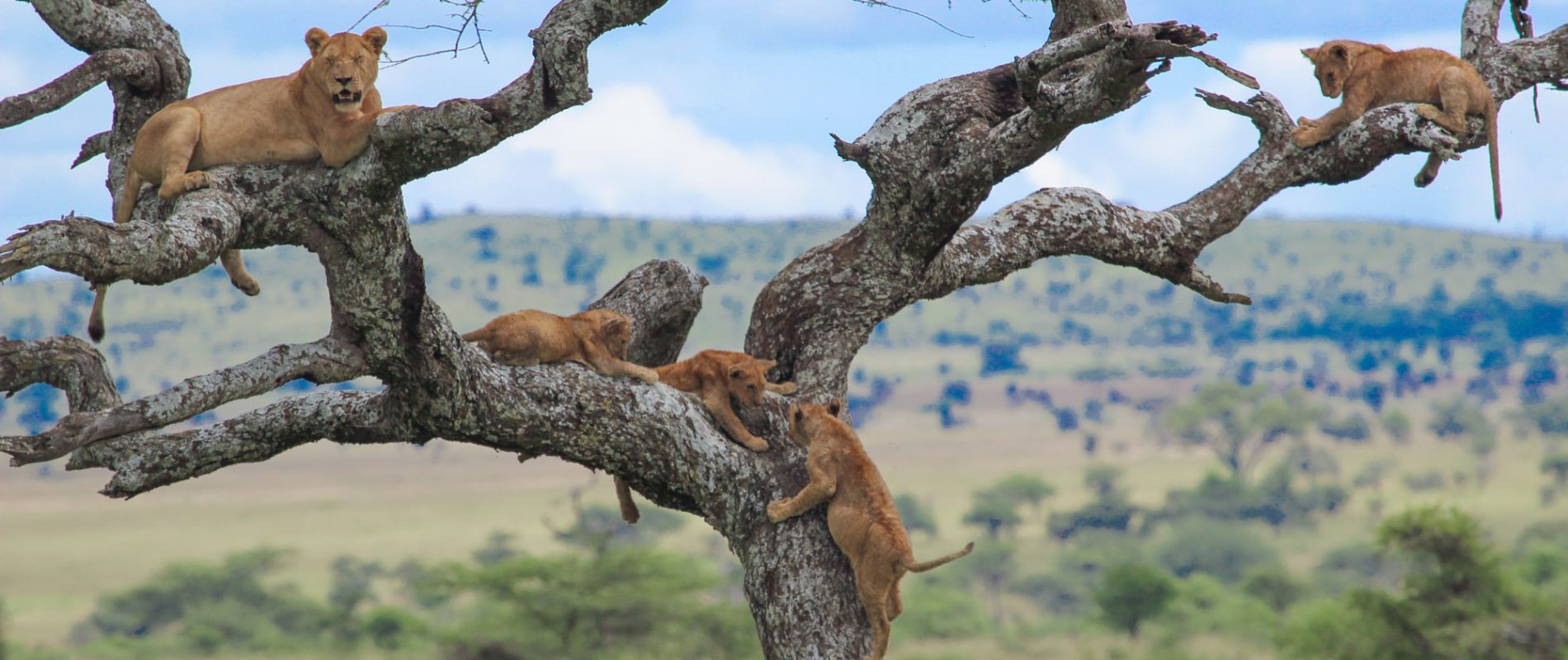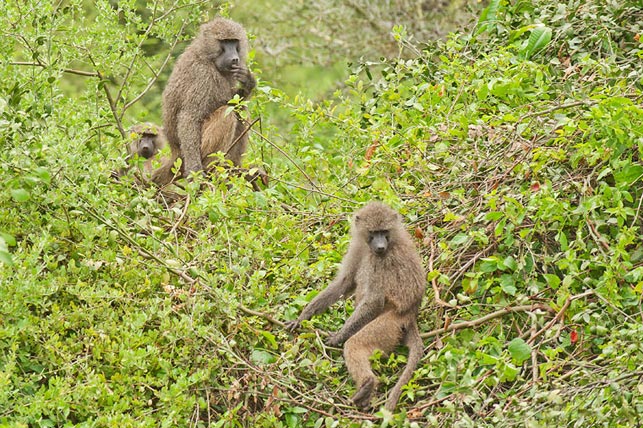For about 30 miles (50 km) Lake Manyara National Park stretches between the high western escarpment of the East African Rift Valley and the flat surface of the alkaline Lake Manyara, what shrinks considerably in the dry season. Although relatively small, Lake Manyara National Park displays a great diversity of animals and ecosystems, ranging from savannah to jungle-like evergreen forest.
During the rainy season the lake hosts millions of flamingos, waterfalls spill over the cliffs of the rift wall and hot springs bubble to the surface in the south. Inland of the floodplain, a narrow belt of acacia woodland is the favored resting place of Manyara´s legendary tree-climbing lions. Lake Manyara National Park offers perfect conditions for exciting canoe safaris, and it is the only park on the northern circuit where night game drives are permitted.
Although a small national park by Tanzanian standard Lake Manyara National Park offers a virtual microcosm of the Tanzanian safari experience. Year-round elephants, hippos, zebras, giraffes, wildebeests, waterbucks, klipspringers, impalas, warthogs, blue monkeys, and even dik diks gather along the shores of the lake. Tree-climbing lions are known from other parks as well but can most easily be seen in here, and the broken forests growing upwards the rift escarpment make it a great place for leopards. Immediately obvious to any visitor are the huge troops of baboons often numbering several hundred individuals. The Lake Manyara baboons are regarded as Africa´s largest baboon community.
Lake Manyara National Park counts as one of the most excellent birding spots in East Africa. More than 400 species of birds inhabit the park and many remain throughout the year. Visitors might reasonably expect to observe 100 of these on a single day. The shallow lake gets occupied by thousands of pink-hued Lesser flamingos during the wet season, as well as other large water birds such as pelicans, cormorants, storks, herons, egrets, stilts, spoonbills, and Egyptian geese. An unforgettable experience is the sight of a giant flock of the finch-like red-billed quelea gathering in the thousands and wafting over the water in insect-like swarms. The abundance of water all around attracts even big forest birds in large numbers such as noisy silvery-cheeked hornbills, crowned eagles, and crested guineafowls.












